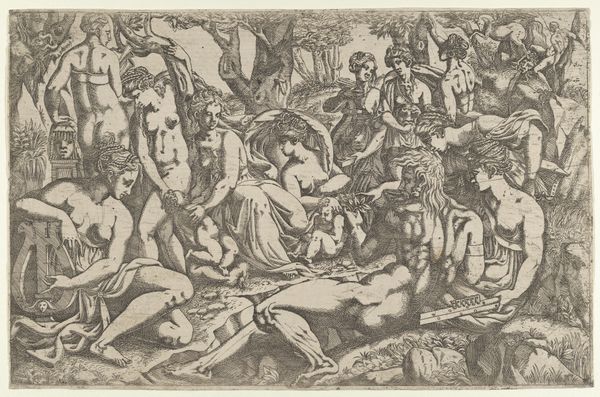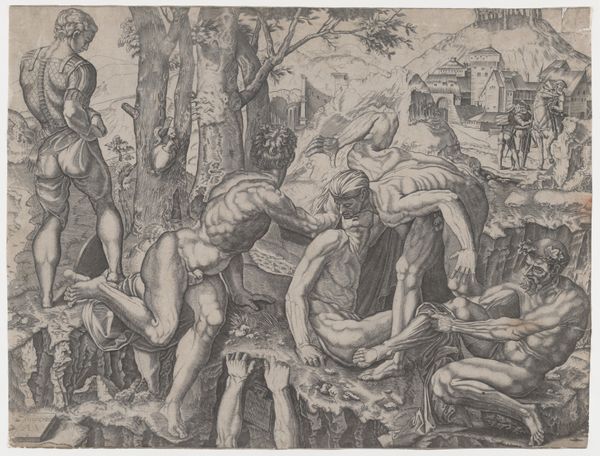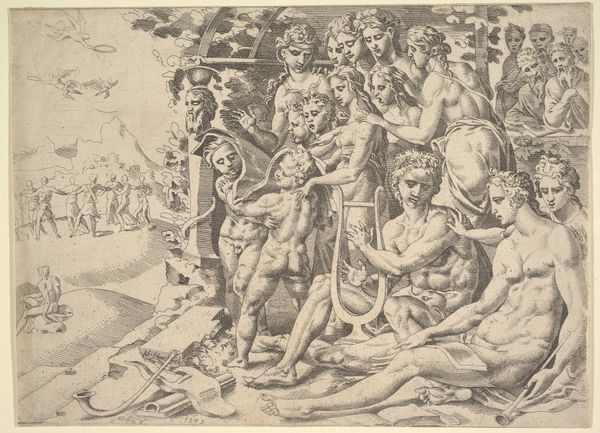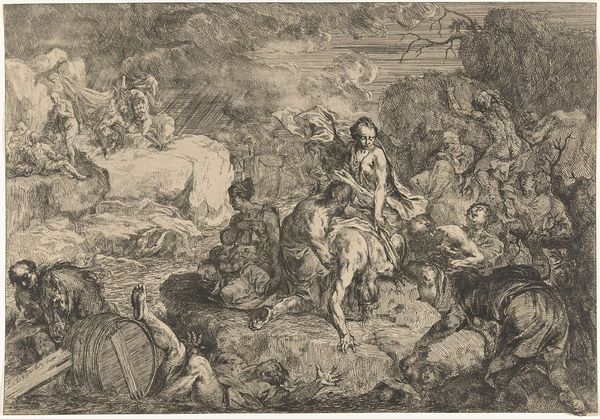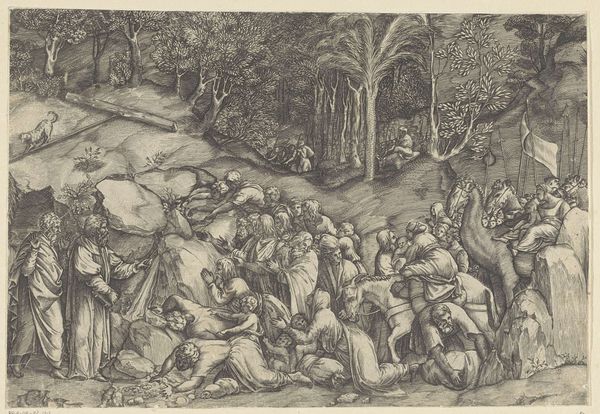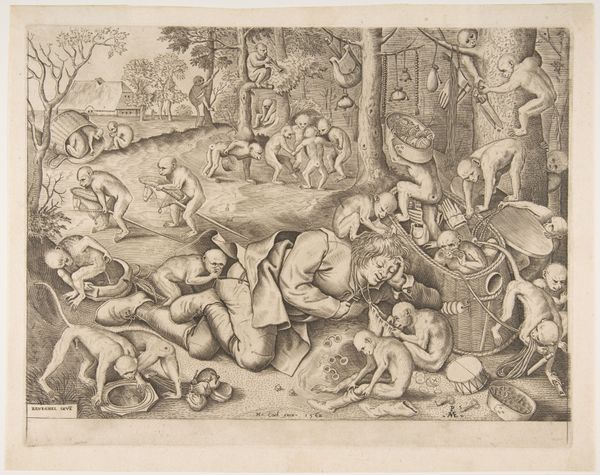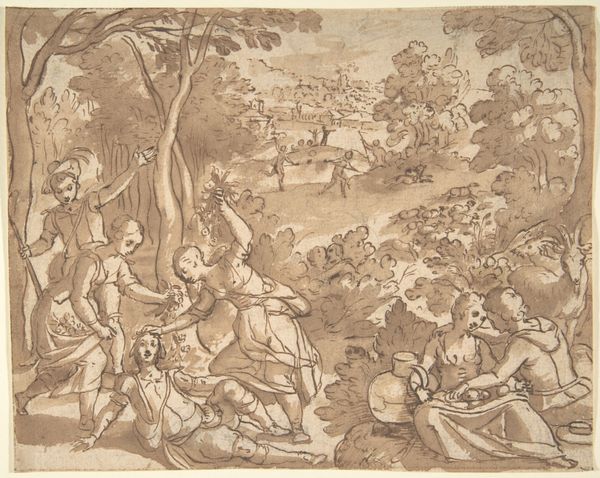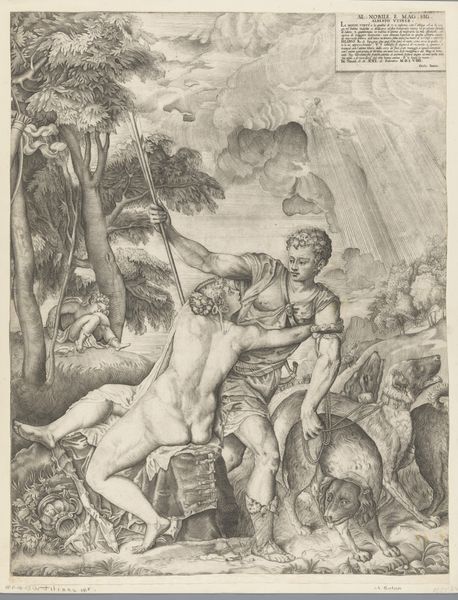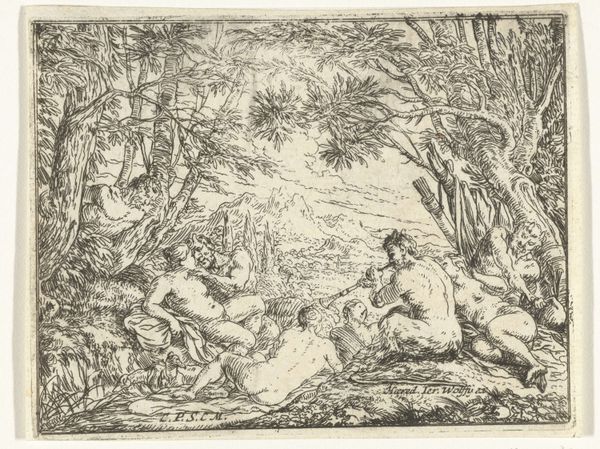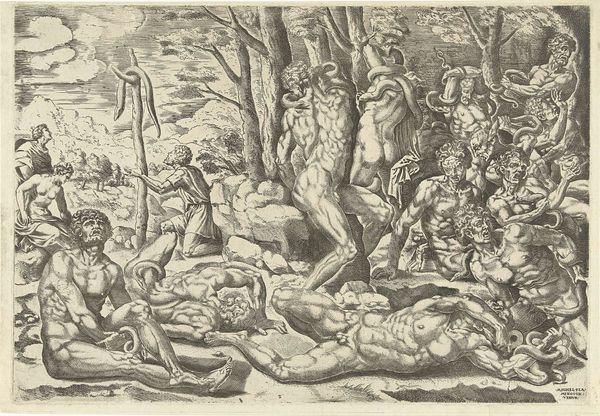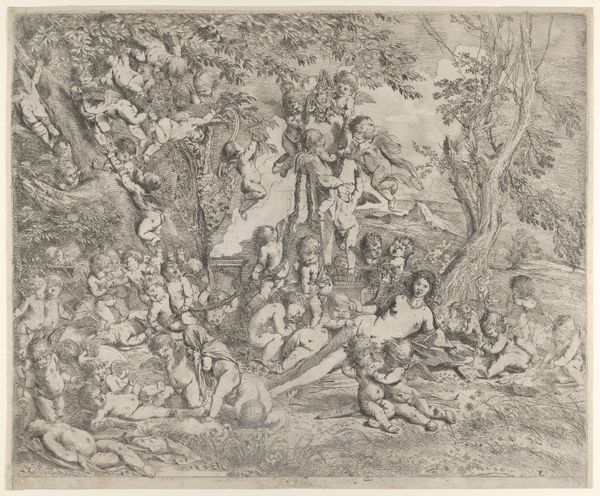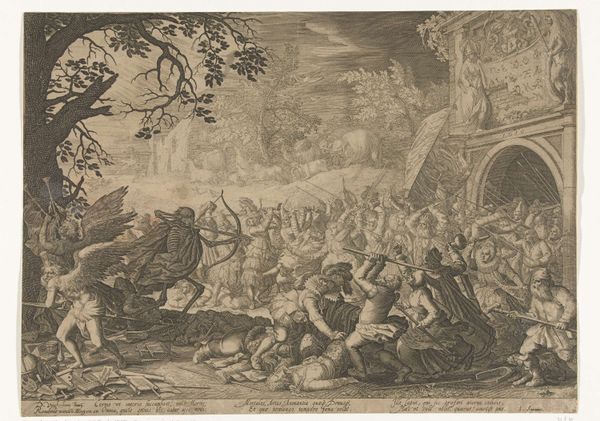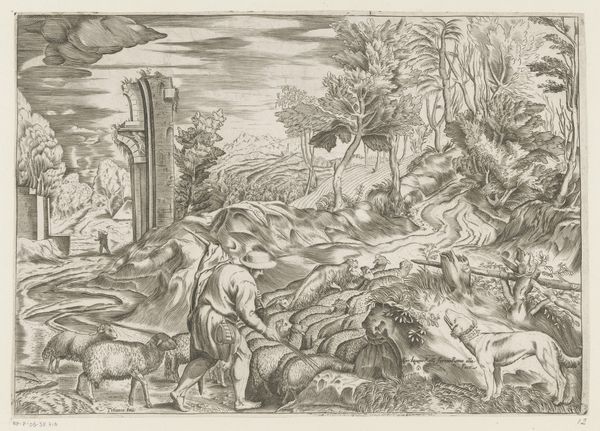
drawing, print, ink, engraving
#
drawing
#
ink drawing
# print
#
mannerism
#
figuration
#
ink
#
pencil drawing
#
history-painting
#
engraving
Dimensions: height 218 mm, width 335 mm
Copyright: Rijks Museum: Open Domain
Curator: What an unsettling scene. My eye is immediately drawn to the overwhelming sense of chaos. Editor: Indeed. The dense composition and stark contrasts amplify the scene's drama. Here at the Rijksmuseum, we have Cornelis Bos's "The Plague of Serpents and the Brazen Serpent," an engraving created around 1539. It depicts a vivid biblical scene rendered in the Mannerist style. Curator: The Mannerist influence is clear, especially in the exaggerated musculature and dynamic poses of the figures. They seem almost theatrically tormented. Editor: It certainly plays into the sense of divine retribution, reflecting anxieties around sin and redemption. Look how the central figure gazes upward toward the staff with the brazen serpent. Curator: Is that the source of salvation in this depiction? In the background, you can see more people are still being attacked. Why is there no divine intervention for them? Or do they lack the "sight"? Editor: A crucial point. The engraving captures a specific moment of crisis from the Book of Numbers. Those who look upon the bronze serpent are saved, while those who don't…aren’t. One has to wonder who the artist was producing this artwork for. Could this be some form of propaganda or even religious tool for conversion or for maintaining certain people in positions of power? Curator: Considering the political and religious turbulence of the 16th century, it's easy to imagine. Religious imagery had immense power. Printmaking made these stories available for much broader audiences than ever before. It's worth investigating whether these engravings have circulated for propaganda purposes. Editor: The emotional power and the visceral portrayal of suffering in the work can still resonate with viewers today, although perhaps inviting very different reactions now. We could have a whole debate about the weaponization of fear. Curator: Perhaps even more telling would be the viewers and collectors that kept and maintained such artworks throughout the centuries. Now I am left wondering how the act of looking becomes an active response. Editor: It becomes another piece in this ongoing and complicated story that continues even into the present day.
Comments
No comments
Be the first to comment and join the conversation on the ultimate creative platform.
